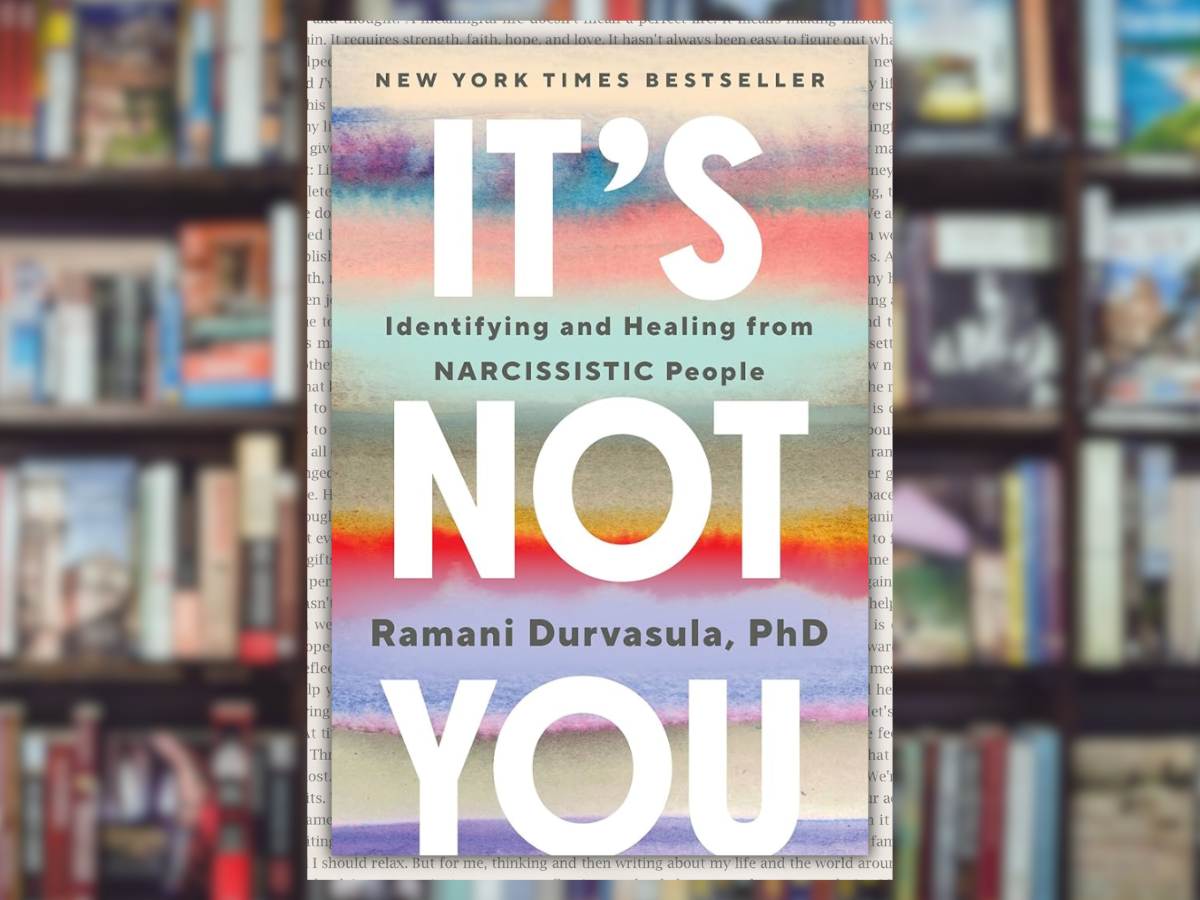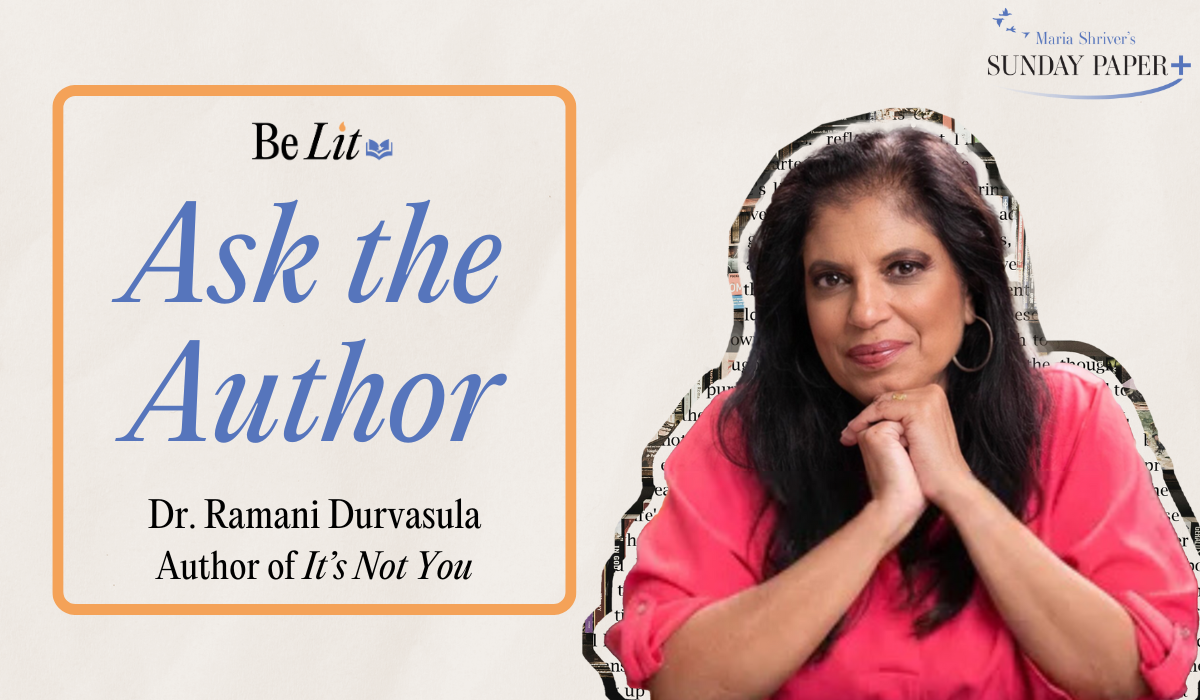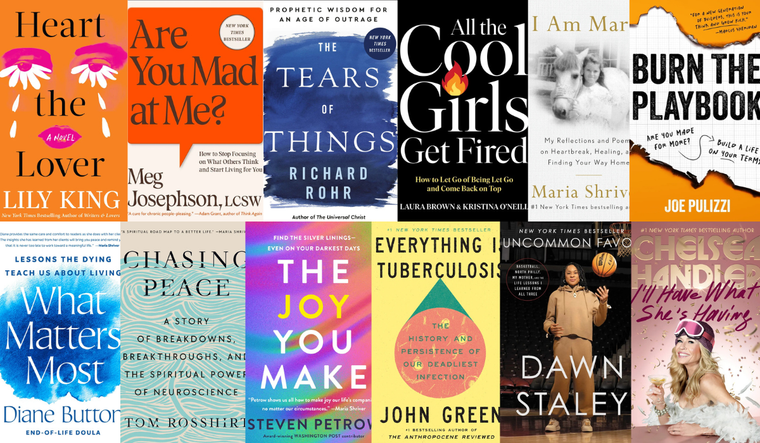Ask the Author: A Look Back at Dr. Ramani Durvasula’s Bestselling Book “It’s Not You”
Last year, It’s Not You: Identifying and Healing from Narcissistic People forever changed the conversation about narcissism. Published by The Open Field, the book was a powerhouse bestseller for a reason, Dr. Ramani Durvasula’s training as a clinical psychologist has made her the go-to expert on surviving narcissistic relationships.
This week, we asked Dr. Ramani to look back on the release of the book—how her life has changed, what she wish she had known before she published, and what she might have done differently if given the chance to do it all again. To hear what she had to say, and take a look inside this bestselling book, keep reading.
THREE QUESTIONS WITH DR. RAMANI
Dr. Ramani, how has your life changed since releasing It’s Not You?
Ironically, my 10th grade English teacher told me I was a terrible writer, and that I should stick to science where I wouldn’t need to “use my words…”. I carried his words until this happened, so that was a big change!
My life changed in a few ways. On the professional front, the bestseller status of the book created visibility for an issue (the impact of narcissistic and antagonistic relationships) that is still understudied, under addressed, and still looked at with some side eye. There are MOUNTAINS of literature about narcissism and antagonism, and about therapy with folks who are narcissistic, and fundamentals of narcissism but very little is written in either the scientific or public literature about what happens to people in relationships with narcissistic and antagonistic people. When this book became a bestseller, it opened a world of possibilities to share it globally with groups of survivors, therapists, HR professionals, policy makers. I have met extraordinary people around the world with both painful and inspiring stories of resilience and growth. The book will ultimately be translated into about 30 languages! For this book to become a bestseller also let people know they are not alone, and that is something I have been trying to do for a long time. Globally, this issue is more important now than it was even a year ago when this book was initially released.
And if you read the preface of the book, there is a very Ramani story behind it—the little girl who wouldn’t take a chance and wear the “purple sequined dress”—for fear of being seen, and I had to cut through some of that and be seen, which was good for me (but uncomfortable). I wish I could say becoming a “bestselling author” completely squelched those demons of “not enough” and imposter-ness that I carry, but alas, not that simple. I feel a tremendous gratitude, that for a moment in time I had the opportunity to share my words and accumulated experience, and in turn, people were helped—that was a powerful experience. It also put a little money in my pocket which has allowed me to care for my elderly parents in a more consistent, balanced, and present manner.
For a variety of reasons getting this “bestselling” monkey off my back has lifted a psychological weight for me. I believe in my writing more, and it has redoubled my focus on helping survivors of relationships with narcissistic/antagonistic relationships. I finally put the purple dress on…
What do you wish you had know before writing and releasing this book?
I wish I knew that the writing would come naturally, and the marketing is awful. I also learned that having a fantastic editor is everything (Thanks Nina!)—she pulled a voice out of me I didn’t know I had. I am true to my academic roots—an introverted, in my head, happy to lock in for days at a time, do the research kind of gal. The intensity of getting a book out there in a world saturated with celebrity memoirs and famous authors with massive platforms and so much noise that it is astonishing that any voice can be heard above the cacophony. I thought I was prepared for it, and I wasn’t.
People told me the marketing phase is demoralizing, and I was fortunate to have good friends who have had commercial success or expertise in social media share with me some of the things they did which we modified to our budgets and capacities. The thing I will never know, and I wish I knew is whether everything we did was necessary or if we overdid it. I wanted to look back and say: no regrets, we tried everything. We were up against some real marketing juggernauts the week we released but managed to pull it off—it felt like the Little Engine that Could.
What’s something you wish you had done differently?
Perhaps the answer here is what I “wish I still could do differently.”
I couldn’t stop working my day job as I wrote and marketed this book—so I was still working hard on the YouTube channel, podcast, therapist training, consulting, research, speaking, wrapping up my academic job, and maintaining my therapy practice. I compared myself to other people who were more successful and seemed to have it all figured out. As a result, I didn’t take care of myself and ran myself ragged, especially during the marketing phase. I became overfocused on the goal and pushed myself and others too hard.
What would I have done differently? I would try to find the volume button on my psyche and turn it down a bit—there was still that little girl in me that thought if I did good, got the bestseller, everything would be fine. That sort of existential panic was too much. The legacy of surviving and experiencing narcissistic relationships is that we hyper-perform and buy into the falsehood that if we are “enough” then we will be loved, and I was still stuck in that. I would have been kinder to everyone around me, less panicked, more present, taken better care of myself, and stopped trying to heal my wounds by overachieving. Ironically, the process I went through was a mirror of the day-to-day of what people go through in these relationships all the time.
Take a Look Inside

For many of you, simply hearing the term narcissistic abuse is the first time your pain received a name. This is no ordinary broken heart, and for many it is a shattered spirit that began in childhood or a series of invalidating relationships that shaped you, wounded you, changed you, and stole reality and your sense of self from you. Some of you may have showed up to therapy and been told that you were just anxious, that all relationships are difficult, and that you should find better ways to communicate, which made you doubt yourself more. Others of you may have felt shamed for being “estranged” from family members. When you are actively experiencing the fallout of narcissistic abuse, you can’t imagine coming out the other side, and even when you are out of the relationship, some wounds remain—the grief, the loss of trust, and a permanently changed worldview.
What does healing mean to you? You may believe that healing would mean being at peace; no longer doubting or blaming yourself; not ruminating; feeling whole; trusting your instincts; and forgiving yourself. You want the narcissist to be held accountable, to be unmasked, to take responsibility for what they did, and you may feel that to heal, you need justice. You want to see that the narcissistic person doesn’t just get to move on while you struggle with anxiety, grief, regret, and doubt. Sadly, we don’t always get justice and accountability, or even an apology. Is it possible to heal even if the narcissistic person doesn’t face any consequences?
Healing isn’t just about crying it out. It is about grieving and clearing out space, and in the new space, building a new life, finding your voice, and feeling empowered to articulate your needs, wants, and hopes, and finally feel safe. This is a process of evolving from surviving and coping to growing and thriving.
There is no schedule to healing. It takes as long as it takes, and it varies depending on the nature of the relationship, whether you stay or go, and your own life history. Healing means being kind to yourself, even when you get hoovered back in or burned after giving the narcissistic person a second chance. It means wisdom, discernment, and a willingness to step away from toxic people, even when other people are shaming you about forgiveness. It is about radical acceptance and living with the painful realization that narcissistic patterns do not change. It is about no longer blaming yourself and wondering if you are enough. It is about finding meaning and purpose and learning to breathe after years or a lifetime of walking a tightrope of appeasing and validating them while censoring yourself.
I wouldn’t have written this book if I didn’t think healing was possible. Every day I witness people appreciate simple joys they couldn’t have while they were in narcissistic relationships, pursue goals they were once mocked for having, reconnect with people they lost. I’ve also seen people finally come into their own and experience an identity separate from the narcissistic people in their lives. I’ve seen people fall in love again . . . and tentatively learn to trust.
But healing is only part of the destination. Your goal is to get to thriving and living in synchrony with your authentic self (and figuring out who that authentic self actually is), to retrieve those wings that have been clipped by the narcissistic relationship and finally fly. Once you push back on the rumination and regret, protect and liberate the trauma- bonded child within yourself, and switch up your self- talk and stop gaslighting yourself, you will shift to unpacking your true self, as well as the goals and aspirations you silenced, and allow yourself to live into them.
As you use this next part of the book, be active. Journal, record your thoughts and feelings, and track your progress. Try the techniques and reflect on how they are working. Take some chances and pay attention to how it feels. Healing is an active process.
Narcissistic people are noisy storytellers, and they tend to infect you with their limiting narratives for you. Ultimately, healing is about taking yourself back, revising the stories you were told, and rewriting them on your own terms.
It's Not You: Identifying and Healing from Narcissistic People by Ramani Durvasula, PhD, published by The Open Field, an imprint of Penguin Publishing Group, a division of Penguin Random House LLC.
Want More?
Check out Maria's Conversation Above the Noise with Dr. Ramani here.
Please note that we may receive affiliate commissions from the sales of linked products.




